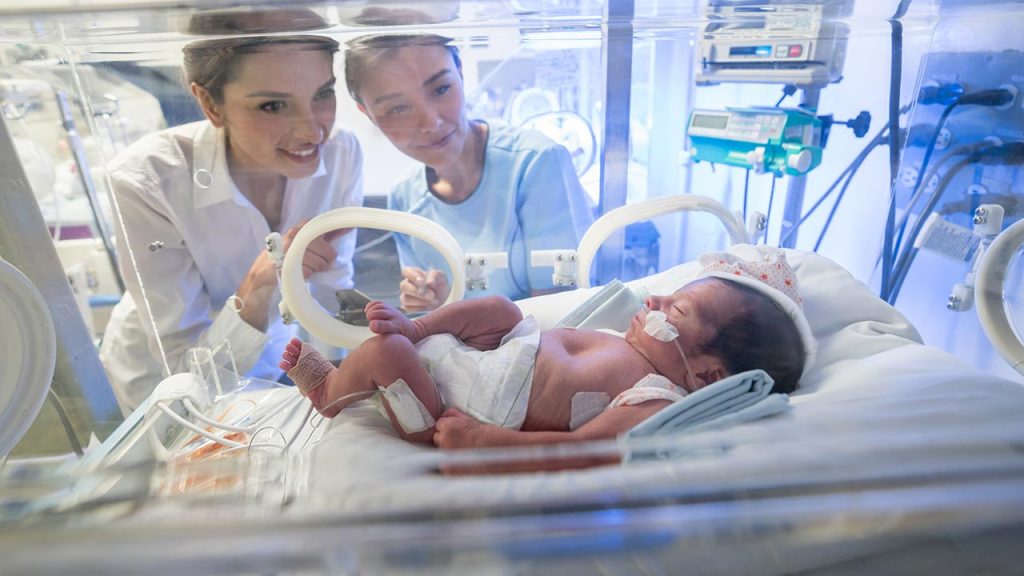Experts believe that many premature newborns could be saved by implementing new technology that allows doctors to diagnose patients online. Telemedicine “robots” are a new diagnostic tool that will enable doctors to make bedside video conversations and have already been used to treat babies at Liverpool Women’s and Alder Hey Children’s hospitals.
“This definitely has the potential to save the lives of extremely preterm infants who were born outside of specialist centres and improve their outcomes. What we’ve demonstrated is that it’s easy to use, it improves the quality of care for babies and their families, improves the speed of review, and it is very close to being there in person,” said Dr Chris Dewhurst, the clinical director at Liverpool Neonatal Partnership.
The device has cameras, a screen, and even a stethoscope, and it can interface with MRI scanners and thermal imaging cameras. It is mounted on a mobile phone and allows a consultant to gain real-time access to a patient’s medical records.
Dewhurst and his team started utilising the gadgets in March 2020. “We lost seven of our 14 consultants due to shielding or isolation – 40% of the time available for clinicians to be in hospital. It [the robot] kept us going.”
Because the equipment has a camera that can be put above the baby to illustrate the real-time scenarios, he added that using the robots was easier than physically being there on some occasions. “If I was there in person, I wouldn’t be able to see that because there were people around the baby.”
According to the National Neonatal Audit Program data, doctors identify which foetuses may require assistance after birth. Still, it isn’t always possible, and 9,523 babies were transported between hospitals at least once in 2015.
“For babies who are extremely preterm, and have not been able to move into a NICU, then they’re not going to be looked after by people with the specialist skills. And we know that those babies have worse outcomes,” Dewhurst said.
He’s attempting to secure funding for the devices in hospitals with SCBUs so that healthcare teams may swiftly access expert guidance.
“We now need to find the funding so that babies who were born in other hospitals who need immediate intervention can have a neonatologist there immediately, within minutes, rather than them not being there at all, because they’re 40 to 50 miles away.”
The Mayo Clinic in Minnesota has the same system with neonatologists assisting teams at 19 regional hospitals. According to Dr Jennifer Fang, medical director of the Mayo Clinic’s tele neonatology program, only neonates with critical illness needed to be moved, and fewer parents had separated from their infants.
Mayo Clinic physicians’ goal is to be available for virtual counselling within five minutes of challenging deliveries or neonatal accidents. Before the initiative, according to Fang, the clinic was involved in birth-injury cases every eight to nine months. “We haven’t had a single birth-injury case in the last eight years now that our program is in place.”
According to, the devices might be employed in different situations. “It allows you to have access to clinicians, for example, who have retired but still want to be part of the workforce, yet can’t go to the hospital every day.”
The robots might be used in a variety of settings. “It allows you to have access to clinicians who have retired but still want to be a part of the workforce yet can’t go to the hospital every day,” said Jonathan Patrick at Consultant Connect, who supplied the robots.
At the University Hospitals Leicester NHS Trust, an experiment is underway in which surgeons are frequently split between two locations. Instead of making separate ward visits, the trial’s director, Dr Steve Jackson, suggested that the physicians from various sites call into consultation and discuss the case on the spot.

